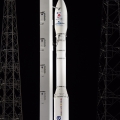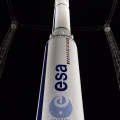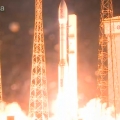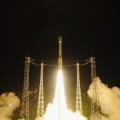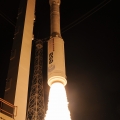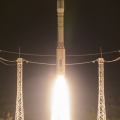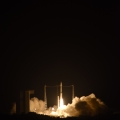ESA’s LISA Pathfinder lifted off earlier today on a Vega rocket from Europe’s spaceport in Kourou, French Guiana, on its way to demonstrate technology for observing gravitational waves from space.
The spacecraft is controlled by the European Space Operation Centre (ESOC) in Darmstadt, Germany, and is currently into an elliptical orbit around Earth with perigee at 200 km, apogee at 1540 km and an inclination of about 6.5°. According to the flight control team all the systems are in good health and the behaviour of the spacecraft is nomimal.
From there, LISA Pathfinder will use its own propulsion system to perform a series of manoeuvres to raise its apogee, and will eventually reach its operational orbit, a 500 000 × 800 000 km orbit around L1. The propulsion module will separate from the science spacecraft during the transfer into the operational orbit, about a month after the nal burn. The total transfer phase will last about eight weeks.


